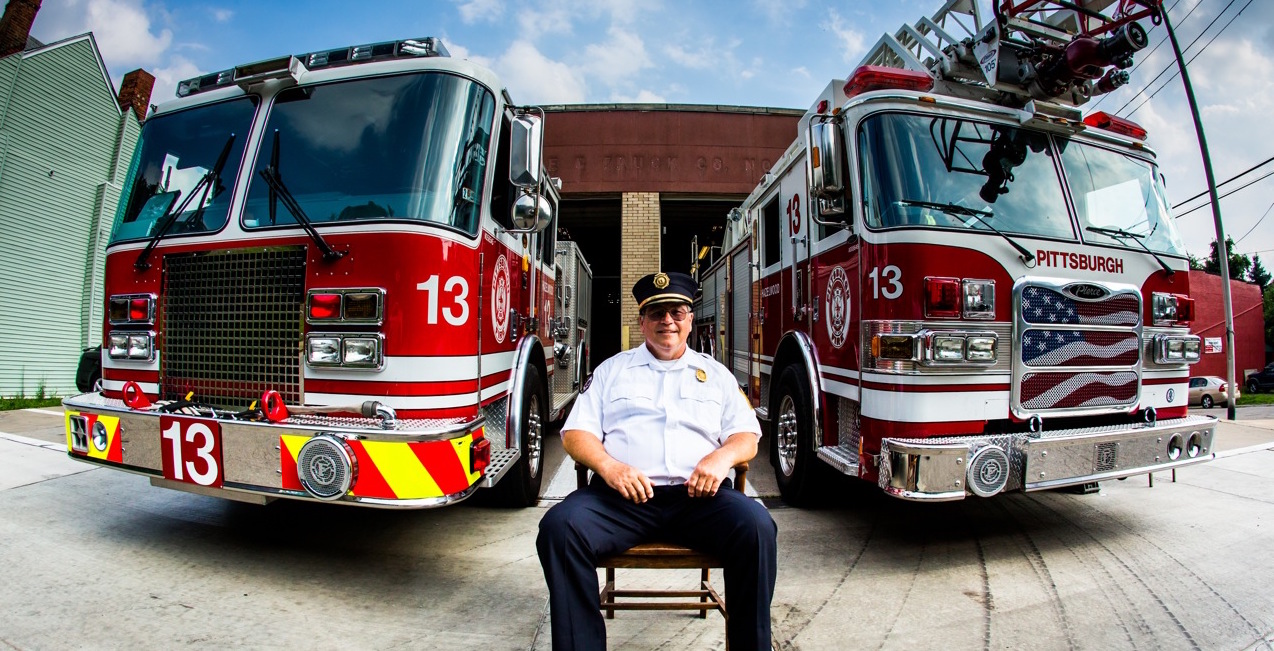
Fire Risk Analysis: Predicting Fire Risk to Prioritize Commercial Property Fire Inspections
The Fire Risk Analysis project uses fire incident and property data to develop predictive models of structure fire risk in partnership with the Pittsburgh Bureau of Fire (PBF) and the Department of Innovation and Performance (I&P). PBF conducts regular fire inspections of commercial properties, as stipulated by the municipal fire code. This project helps PBF prioritize their property inspections with data-driven insights from the fire risk analyses from machine learning models, implemented in a data dashboard and interactive map visualization, in order to target their inspections at the properties at greatest risk of fire.
Project Update (April 2020)
The model is currently deployed on the City’s servers and retrains on a regular basis, as new data is generated. In the months since the first model was trained and risk scores generated, 14 of the 45 (31%) building-related fire incidents (not all of which are “working fires”) occurred in one of the medium or high-risk properties, significantly higher than the 0.20% base rate for fire incidents in the city. The team is also working to make the model more easily re-usable by other cities’ fire agencies, and future work may investigate the extent to which the model generalizes to new cities and contexts.
The Fire Risk Analysis project has developed predictive models of structure fire risk in Pittsburgh to help PBF prioritize their property inspections based on the risk of fire in any given commercial property. Future work includes incorporating new data sets, experimenting with deep learning models (e.g. recurrent neural networks, reinforcement learning, and/or “active learning”), and expanding this approach to predict fire risk in residential properties at the census block level.

Our future work includes incorporating new data sets, experimenting with additional model types (e.g. recurrent neural networks, reinforcement learning, and/or “active learning”), and expanding this approach to predict fire risk in residential properties at the census block level. Our team is also working to make the model more easily usable by other cities’ fire agencies.
If you’re a student with data science or machine learning experience and are interested in contributing to this project, or if you’re a representative from a city interested in adapting this model, please contact the project lead below.
Publications
- Lee, J., Lin, Y., and Madaio, M. (2018). A Longitudinal Evaluation of a Deployed Fire Risk Model. Presented at the AI for Social Good Workshop at the Neural Information Processing System Conference. (NeurIPS 2018).
- Featured “Innovation of the Month” GovTech magazine: https://www.govtech.com/data/Pittsburgh-Uses-Data-to-Predict-Fire-Risk.html.
A technical report from the first phase of the project can be found here.
Open-source code for this project can be found here.
This work was recently accepted to the KDD conference:
Singh, B., Hu, Q., Chen, J., Chen, F., Lee, J., Kuo, N., Narang, P., Batts, J., Arnold, G., Madaio, M. (2018). A dynamic pipeline for spatio-temporal fire risk prediction. In Proceedings of the 2018 ACM SIGKDD Conference on Knowledge Discovery and Data Mining (KDD) (in press). [pre-print pdf]
PARTNERS:
Chief Jones, Lt. Jason Batts
Pittsburgh Bureau of Fire
Laura Meixell, Geoffrey Arnold
Pittsburgh Department of Innovation and Performance
PROJECT LEAD:
Michael Madaio
Ph.D. Student, Human-Computer Interaction Institute
Carnegie Mellon University
mmadaio@cs.cmu.edu
Project Team:
Yanwen Lin
Bhavkaran Singh
Jessica Lee
Qianyi Hu
Jeffrey Chen
Fangyan Chen
Palak Narang
Nathan Kuo
